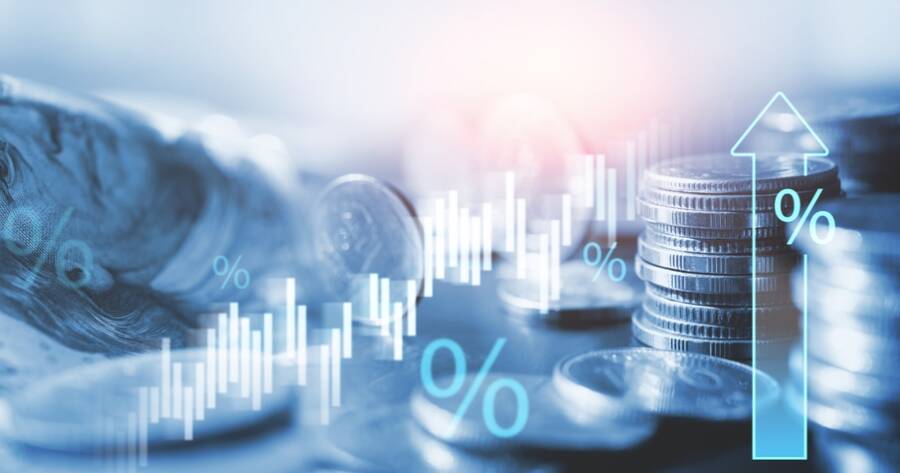As we move into 2025, interest rates are a topic on the minds of many, especially with the economic shifts we’ve experienced in the past few years. The Federal Reserve, global economic factors, and domestic financial markets have all contributed to the current economic landscape. While predicting exact interest rate movements can be difficult, understanding the key trends and preparing your finances accordingly can help you navigate any financial changes ahead.
The Current State of Interest Rates
As of late 2024, the interest rate environment has been marked by a period of elevated rates. The Federal Reserve raised rates several times in response to inflation concerns, with the aim of curbing price increases and stabilizing the economy. This shift significantly impacted lending costs, including mortgages, auto loans, and credit card interest rates.
In early 2025, many financial experts predict that interest rates may stabilize or experience minor reductions, depending on how inflation trends and economic growth play out. However, the key factors that influence interest rates—such as inflation, employment rates, and consumer spending—remain volatile, making any precise predictions challenging. While the Federal Reserve has signaled a cautious approach, any changes will depend largely on the ongoing economic data.
Economic Influences on Interest Rates
Interest rates are determined by a variety of economic factors. Central banks like the Federal Reserve play a major role by setting the benchmark rates that directly affect borrowing costs. In addition to this, inflationary trends are a critical indicator. If inflation continues to be above the Fed’s target, it may keep interest rates higher to discourage borrowing and slow down the economy. Conversely, if inflation decreases, there may be room for the Fed to lower rates.
Employment rates also contribute to the decision-making process. If employment growth remains strong, the economy could experience upward pressure on wages and prices, leading to higher inflation and subsequently, higher interest rates. However, in the event of an economic slowdown or a recession, the Fed might decide to lower rates to encourage borrowing and stimulate growth.
The global economy also impacts interest rates. International trade relationships, geopolitical tensions, and shifts in foreign markets could all influence U.S. financial markets and, by extension, interest rates. For example, a global slowdown could lead to lower demand for U.S. exports, which may affect inflation levels and interest rates.
How Higher Rates Could Impact Your Finances
If interest rates remain high or even increase in 2025, several areas of your finances could be affected. One of the most noticeable impacts would likely be on your debt. Variable-rate loans, such as credit cards or adjustable-rate mortgages (ARMs), tend to rise in line with interest rate increases. This means that monthly payments could become more expensive, putting additional strain on your budget.
For those looking to borrow money, such as for a mortgage or car loan, you might face higher borrowing costs. A higher interest rate means that you will pay more over the life of the loan, so it’s important to budget accordingly. Individuals with significant outstanding debt should consider paying down high-interest loans before rates go up.
On the other hand, if you have savings or investments, higher interest rates could present an opportunity. Some financial products, such as certificates of deposit (CDs), savings accounts, and bonds, may offer more attractive yields as rates rise. It’s important to stay informed about these offerings to ensure you’re getting the best return on your investments.
Preparing Your Finances for 2025
While it’s impossible to predict exactly what will happen with interest rates, there are several steps you can take to prepare your finances for whatever comes next. One of the most important actions is to review and adjust your debt strategy. If you have any variable-rate loans, consider refinancing to lock in a lower, fixed rate, or focus on paying off high-interest debt to minimize the impact of rising rates.
For those planning to take out a loan in 2025, it might be wise to secure financing sooner rather than later, especially if you anticipate rates will increase. Shop around for the best rates and consider locking in a fixed rate to protect yourself from future fluctuations.
Additionally, ensure that your savings and investments align with your financial goals. If you’re saving for short-term goals, higher interest rates might offer better returns on savings accounts or CDs. For long-term investments, it’s important to diversify your portfolio to weather any potential changes in the economy.
The Role of Inflation in Shaping Interest Rates
Inflation remains one of the most significant factors influencing interest rates. If inflation stays above the Fed’s target of around 2%, interest rates are likely to remain high in 2025. Higher inflation leads to higher borrowing costs as central banks attempt to reduce economic demand and curb rising prices. Conversely, if inflation moderates or decreases, the Fed may feel less pressure to maintain high rates.
For individuals, rising inflation means that the cost of living could continue to increase, impacting everything from groceries to housing costs. When preparing your finances for 2025, consider ways to hedge against inflation, such as investing in inflation-protected securities or focusing on assets that tend to perform well in inflationary environments, such as real estate or commodities.
Investing in a Higher Interest Rate Environment
Investing in a high-interest rate environment presents both challenges and opportunities. Fixed-income investments such as bonds may see lower prices as interest rates rise. However, if you hold bonds to maturity, you will still receive the agreed-upon interest payments, which could now be more attractive in comparison to low-rate bonds. Consider diversifying your investments and paying close attention to the types of assets that thrive in rising interest rate environments.
On the other hand, equities may face volatility as higher rates make borrowing more expensive for companies and reduce consumer spending. However, certain sectors such as financials or energy may benefit from higher rates, so it’s crucial to adjust your portfolio based on the broader economic outlook.
Conclusion: Navigating the Financial Landscape in 2025
As we approach 2025, it’s clear that interest rates will continue to be influenced by a wide range of factors, including inflation, employment, and global economic trends. While the exact trajectory of interest rates is uncertain, individuals can take steps to prepare their finances for any potential changes. By focusing on paying down high-interest debt, considering fixed-rate loans, and adjusting your investment strategy, you can better position yourself for a more stable financial future.
In this uncertain environment, it’s important to stay flexible and stay informed. Regularly review your financial goals and make adjustments as needed to ensure that you’re prepared, no matter what interest rates do in the coming year.







